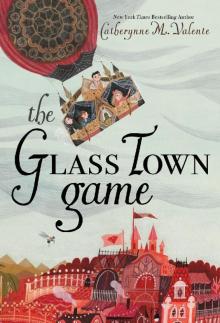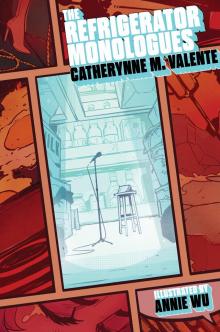


You Are Here, Page 26
Colin Ellard
REDESIGNING FOR CHILDREN
The first step parents can take is to recognize that they themselves may be discouraging their children from outdoor play by providing supportive indoor environments that are altogether too alluring. Many children have TV sets in their bedrooms and unlimited access to computers that are connected to the Internet. In addition, our homes are filled with gaming consoles, Wiis, Xboxes, and Game Boys. Without wishing to reflexively dismiss the educational potential of these gadgets (we saw in the previous chapter that we can use such technologies to build and support our cognition of geographic space), their presence in the home can be stiff competition for the tiny grove of maple trees waiting at the end of the block. Parents provide these devices in part because their children ask for them and in part because parents recognize their educational potential. But they also do so to give children alternatives to outdoor play.
Suburban parents may perceive that the empty streets and parks of the outdoor world hold too many dangers, and those raising children in the city fear the risks posed by heavy traffic and strangers. For most of us, these fears are vastly overblown. Although population levels have risen dramatically, the overall numbers of child abductions, for instance, have not increased substantially in the past thirty years. In spite of such a soothing statistic, many parents have great difficulty in allowing their children to play out of sight, in the outdoors and away from the sheltering walls of the house. Those difficulties are compounded by dramatic media coverage of isolated events involving harm to our children, and it may even be that we are actively encouraged to harbor such fears by those with vested interests in keeping children seated before portals of 24/7 streaming commercial content issuing from all the screens in our house.
Are there ways for us to use the very technology that threatens our children’s health and well-being to turn them out the door and into the wider world without raising our own levels of anxiety for their safety? I think so. As I write these words, I’ve sent my nine-year-old daughter on a walking trip to the grocery store. It’s a little farther than I would normally let her stray from home, and it is in a part of town that, though comfortably filled with “eyes on the street,” is frequented by a wide mix of different pathologies (including many neurotic parents like me). I’ve given her my cell phone. She calls when she arrives at the store and she calls when she leaves. If anything out of the ordinary takes place en route, she hits the speed dial.
Younger children, of course, can’t use cell phones effectively, but enterprising technology companies have designed a variety of devices that can be used to track the location of our children using, for example, Global Positioning System technology. Bracelets can be configured so that they raise alarms when children wander beyond a certain range or when there is any attempt to remove the bracelet. In Denmark, the LegoLand theme park has partnered with Ekahau, an innovative technology provider, to design a “kidspotter” system in which children are fitted with bracelets that triangulate on position using the same types of signals that we employ to set up wireless Internet networks. By dialing a number on their own cell phones, parents can receive updates on the location of their children in the park, accurate to within a meter or two. There is little reason why such technologies could not be used to keep track of our kids in neighborhoods, parks, and other spaces that we might like them to explore.
Though such measures may strike some as smacking of Big Brother surveillance (one urban planner I discussed this with pointed out, correctly, that similar technology is used to track certain types of prison convicts or parolees), they can also be viewed as a way to subvert technologies that were designed to help us ignore or “work around” natural settings. These technologies can help us to ensure our children’s safety while giving them the necessary autonomy to engage in the primary experiences with nature that they need to be healthy and well adapted as adults. Such tools may not be for everyone, and they are certainly unsuitable for older children, but for the segment of the population of parents who cannot stand the thought of their children wandering the great outdoors, they may provide some extra impetus that will get their nature-deprived kids across the threshold of the house and into some form of greenspace.
The possibilities for using geo-locating capacities of GPS systems to help our children engage with the natural world are particularly intriguing. I have begun to explore the world of geocaching with my 12-year-old daughter. Geocachers put a variety of interesting objects inside weather- and animal-proof containers, hide the containers outdoors, and then post the precise latitude and longitude coordinates on a website.11 Other players visit the website, pick out the coordinates of caches that interest them, and then use a portable GPS to find the caches, make their own contributions, and record their finds in a visitor log at the cache site. Geocaching is a kind of scavenger hunt writ large in earth coordinates and, for older children, it offers a tempting combination of engagement with the outdoor world and the use of clever gadgets of technology. Geo-caching has become a worldwide phenomenon, with caches being hidden near both the North and South Poles, throughout North America, Europe, and parts of Asia. As GPS technology continues to become less expensive and is more commonly included in other tools such as pocket computers and cell phones, there is tremendous potential for helping children of all ages to merge their natural inquisitiveness about gizmos with their innate biophilic impulses.
If the first line of attack is to find ways to get our kids outside (and to give ourselves permission to let them go out the door), the next challenge is even greater—finding ways to configure the environment so that they have opportunities for primary experiences with nature. Unlike mediated exposures to nature, such as field trips to local parks or tightly orchestrated school excursions to outdoor education centers, the most important natural experiences for children are those that they undertake on their own, spontaneously and without the benevolent controlling influence of parents or teachers. These natural experiences begin in the backyard tree, the local storm culvert, or the shady patch of weeds on the front lawn. Such locations provide the ideal backdrop for early ecological epiphanies that take place as very young children hold their first earthworm, watch urban squirrels leap from limb to limb, or notice the differences in smells of the leaves they crush between their fingers.
But though these early experiences are pivotal in helping to develop an awareness of and attachment to the natural world, they do not nurture children’s awareness of space. To learn about space, children must move about, notice the connections between places, and challenge themselves to reconstruct larger views of space from brief snapshots. It isn’t hard to imagine ways of redesigning the spaces between our houses to support this kind of wayfinding fun, but the ideal environments would be anathema to, for example, suburban developers intent on enticing customers by promising large, private building lots. One approach would be to replace the large back yards in such developments with much more modest spaces but to attach these to large, commonly held wild areas complete with complex groupings of native plants, bushes, and trees, interesting rock formations, and, wherever it can be done safely, water.
In his book on biophilic design, Stephen Kellert describes such an ideal setup in the development of Village Homes in Davis, California.12 Houses face inward in small clusters of about eight homes each, providing the safety of enclosure to large naturalized areas held in common by the residents, who collectively plan and maintain shared common areas. Underground storm drains have been replaced by natural swales brimming with plant and animal life, and water from these swales is used to irrigate fruit trees. The homes themselves are well integrated into their natural context and built using sustainable practices, including north-south orientation to maximize passive solar energy and rooftop solar panels to supplement electricity use. Done well, such environments could not only give children opportunities to engage with wild places but could also be made spatially complex enough to support wayfinding challenges.
Even olde
r, established neighborhoods can, with creative and open-minded participation from parents, be turned into enclaves of biophilic design. On my own urban street, a few blocks of houses ranging in age from about 40 to 100 years, some families have removed parts of the fences between their small back yards. Children are encouraged to play in both the front and the rear of the houses, and many games are explicitly designed to help them learn about the spatial connections between adjacent and remote back yards. One game that the children have dubbed man hunt, a variant on hide-and-seek, requires that all children but one hide and the “hunter” find each hider and lead them back to “jail.” This game, mostly enjoyed in summer darkness while parents sit on front porches to socialize, encourages children to explore felt connections with spaces because visual cues are minimal. Such games, especially if embedded in a make-believe narrative, are so compelling for the children that all televisions and computers sit idle for hours at a time. Initiatives such as these can be relatively easy and free. The most important ingredient is a shifting of mental focus on the part of parents, a recognition of what is being lost by denying our children opportunities to explore space in nature and a willingness to replace the manicured but unused lawn with spaces of complexity, mystery, and challenge.
A similar initiative, though more ambitious, took place in Berkeley, California, when a lecturer in real estate slowly acquired an entire city block of residential properties, and removed fences, garages, and pavement to produce a large, interior shared green-space. Early studies of the site showed that, compared to nearby areas with conventional lot layouts, residents were more connected with the outdoors and also with their neighbors.13
Schools, too, must play a stronger role in the development of spatial skills in children. The efforts that schools currently devote to generating novel methods to enhance literacy and numeracy should be matched by initiatives that encourage children to see beyond the walls of the classroom so that they feel connected with the larger world. Such efforts could begin with the design of the school itself. Most new schools that I’ve seen, built with efficiency and economy foremost in mind, consist of a series of low-slung rectangles set into large slabs of flat concrete playgrounds and surrounded by bare playing fields. Such designs do nothing to promote connections between outside and inside spaces. A teacher friend of mine told me recently that at one school where he worked, in the Canadian Arctic, the community had embarked on a marvelous project to better integrate the physical setting of the school with the natural world. The organizers enlisted the help of some native elders, who immediately suggested that the classrooms and hallways should be filled with nature—plants, water, and large rocks—and that the building should be opened to natural light using skylights. Most of these measures were not carried out, falling victim to simple economics or perhaps some failing will, but there’s no question that such changes in design, many of which should not be prohibitively expensive, would help children to make connections between the inside and outside worlds.
Most schoolyards are notoriously lacking in biophilic features. In part this is for the sake of safety—small numbers of teachers must oversee the outdoor activities of large numbers of children. But, as with the redesign of the natural spaces surrounding our homes, if there were ample recognition of the importance to children of cultivating a connection with natural spaces, we would be motivated to redesign schoolyards to satisfy both the need for safety and the need for engagement with wild spaces. In schoolyards planned with changes in elevation, natural groupings of vegetation, and perhaps even some explicit challenges to wayfinding such as mazes, children would be able to lose themselves, if only momentarily, and then in finding their way again obtain some sense of the connectedness of places. Not only would such environments be more conducive to free play but they could be used to structure planned activities that raise children’s awareness of their own spatial strengths and weaknesses. Imagine a schoolyard game in which children name natural features, stitch them into stories like songlines, and then use these stories to plot routes. When such activities have been incorporated into the curriculum of innovative “survival training” camps for children, they have been remarkably effective. Children visiting wilderness camps years later still have vivid memories of places and routes because of the sticking power of these narratives. What has worked for the Inuit and the Australian Aborigines for thousands of years can also work for modern Western children if they receive proper instruction.
In recent years, as awareness of environmental issues has been brought to the forefront of academic curricula, schools have made some remarkable strides in teaching ecology. Many innovative programs have included outdoor classrooms where traditional pedagogic methods have been banished in favor of hands-on lessons that encourage children to think of the functional connectedness of natural ecological systems. Such programs are of tremendous value and should be supported by all parents. In sum what I am proposing is that the next step in healing the rift between our children and the larger world is to encourage them to see past the fractured views of space offered by their own nervous systems. This can be done by giving them opportunities to learn about the spatial linkages of things in environments that are specifically designed to facilitate such experiences.
GROWNUP FUN IN SPACE
As with so many things in life, in trying to put ourselves on a healthier trajectory with respect to our connections with natural spaces, our money and time are best spent on the requirements of children. But what about the rest of us? How can we make interesting spaces a larger part of our own lives? How can we break down our sharply drawn conceptions of a radically schematized space composed of a sequence of short glimpses collected while driving on freeways or hurrying along urban thoroughfares to complete the day’s appointed tasks?
Many of the same principles that might apply to the redesign of play areas and schoolyards for children would have beneficial effects for adults as well. In cities, urban parks, instead of being calm oases existing apart from the main course of events and segregated from pedestrian traffic, could be placed as an integral feature of the urban environment. As much as possible, parks should present interesting wayfinding alternatives for pedestrians intending to walk from one place in the city to another. New York’s Central Park, for instance, is tightly woven into the urban landscape in such a way that it not only serves as a landmark but is large enough to immerse visitors in wild areas. In addition, Central Park serves as the site of a vast number of cultural activities, ranging from theatrical performances to free rock concerts. Another successful greenspace on similar scale but with a very different design is Chicago’s waterfront Lincoln Park, which is a recreational area but also integrates well with several adjacent urban neighborhoods.
City greenspaces are not always managed so well. The National Mall in Washington, D.C., for example, is enclosed by many of the country’s most significant museums, yet it is nothing more than a vast rectangular space devoid of interesting features, natural or human made, or even much in the way of comfortable seating. This huge piece of urban greenspace holds vast potential but is currently wasted. Similar spaces, though much smaller, can be found in midsized cities throughout the world. Open rectangles with paved pathways, brick planters, and perhaps one or two trees may satisfy city plans that mandate greenspace density, but they do little or nothing to place us into contact with natural settings.
On my own walk to work in Waterloo, a typical midsized North American city, I pass through a small, dense urban core and then enter a large city park with forests, fields, winding trails, and even a small area housing a number of interesting animals, both local and exotic. The park connects the urban core to another belt of development, which contains university buildings, student housing, and some commercial areas. There are countless ways of passing through the park to get to my workplace, many of which carry me into small groves of trees surrounding a creek. In these groves, I see otters, squirrels, chipmunks, waterfowl, and a profusion of songbir
ds. I am lucky to live in a city that has had the foresight to preserve slightly more than 40 hectares of greenspace close to the urban core and has, so far, resisted the wiles of developers, but many of the best features of this park could be managed in a much smaller space.
Another nearby preserved area consists of a small ravine filled with dense forests of birch and maple trees crisscrossed by trails and punctuated by a sinuous creek that serves to carry storm runoff away. I have spent many years walking and running in this ravine of less than eight hectares, and it seems as though every visit brings a new view or an unexpected connection to light. The undulating trails make my impression of my precise location just ambiguous enough to bring me to a pleasant state of surrender, curiosity, and attention. Unlike the larger park, this area makes weaker connections with the rest of the city. Many who live in Waterloo are not familiar with the small woods. Placed in a different situation with respect to the surrounding area, woven into the core of the city, such a space could not only serve as a cool respite from the busy grid of streets but could also challenge our spatial senses, remind us of the fragility of our grasp on place, and encourage us to pay closer attention to our ephemeral connections with the rest of the planet.
Even in suburban areas some fairly simple measures could effect profound changes in the ways that the landscape stimulates human awareness of space. I have already mentioned the possibility of corralling shared wild space by removing fences between overly generous back yards to produce larger, wilder spaces. As well, the generous setback of houses from the street leaves vast amounts of space with the potential for redesign. Roads could be narrowed, which would increase the amount of available space considerably and possibly redirect traffic entirely in some areas, leaving the suburban equivalent of an urban pedestrian boulevard.














